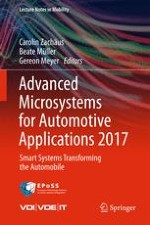This volume of the Lecture Notes in Mobility series contains papers written by speakers and poster presenters at the 21st International Forum on Advanced Microsystems for Automotive Applications (AMAA 2017) "Smart Systems Transforming the Automobile" that was held in Berlin, Germany in September 2017. The authors report about recent breakthroughs in electric and electronic components and systems, driver assistance and vehicle automation as well as safety and testing. Furthermore, legal aspects and impacts of connected and automated driving are covered. The target audience primarily comprises research experts and practitioners in industry and academia, but the book may also be beneficial for graduate students alike.
